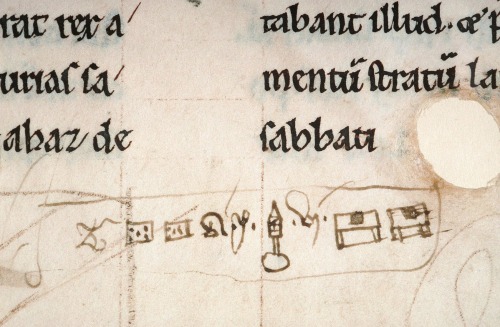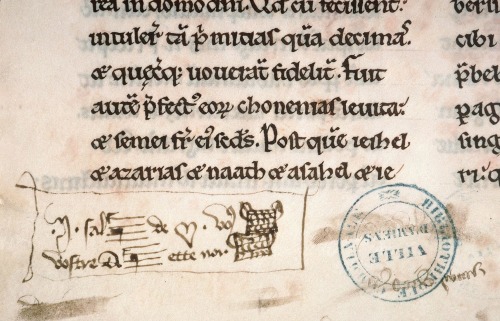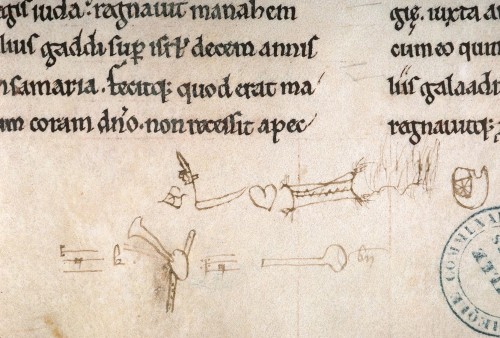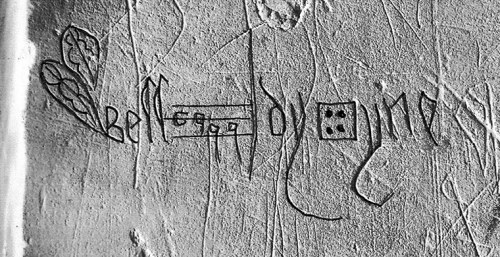Medieval emoji You are looking at a few pages from a late-twelfth-century Bible with quite exception
Medieval emoji You are looking at a few pages from a late-twelfth-century Bible with quite exceptional fifteenth-century annotations in the lower margin (Pics 1-3). The additions, written in a lighter ink, are an early form of the “rebus”, a manner of writing where pictures represent (part of) words. They are found, for example, in graffiti on medieval walls. The scratched out message in Pic 4, found in the Lidgate Church in Suffolk, is directed at one Lady Catherine - it was decoded in the 1960s. “Well”, one clearly reads. Then follow the musical notes “fa”, “re”, “mi” and la” - note how the manuscript annotation in Pics 2-3 contain such notes as well. The letters “dy” are written next, followed by a dice (known then as a “cater”), and finally we read “yne”. In short, this 15th-century rebus reads “Well fare, mi lady Cateryne”. You can just imagine a visitor to the church scratch this love message in the wall, perhaps with the lady looking on, a few pillars away. What is striking to our modern eye, of course, is the close resemblance to ideograms and emoji, especially with the manuscript scribbles. As we still do now, the medieval writers tried to code a unique, secretive message with symbols broadly known to everybody. Pics: Amiens, Bibliothèque municipale, 28 (Pics 1-3) and graffiti in the Lidgate Church, Suffolk (source). More on the latter in this article. -- source link
Tumblr Blog : erikkwakkel.tumblr.com
#bookhistory#history#medieval



